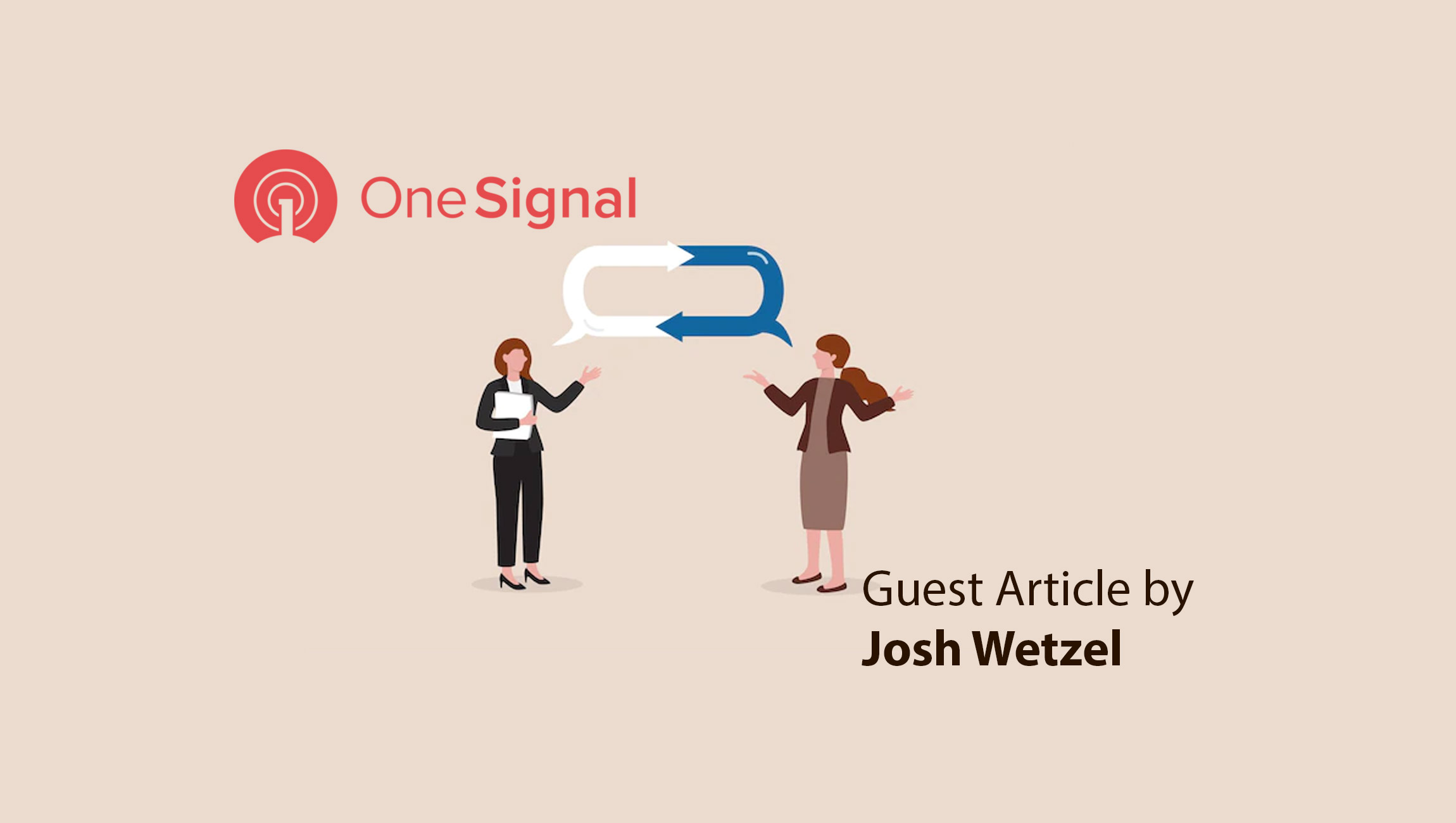This article discusses key messaging trends and tactics companies should implement in order to increase customer acquisition and retention. Using data from 100 billion daily messages and interviews with more than 500 OneSignal customers, this piece shows the importance of hyper-personalized, relevant and timely communication across multiple channels. This piece will cover tips and best practices for organizations to develop a robust communications strategy in order to attract, retain and convert customers.
______
There’s been a permanent shift in how companies communicate and engage with users across channels and devices. While the opportunities for new customer touchpoints have grown, they’ve also shifted user expectations and demand for tailored digital experiences. Users now expect hyper-personalized, relevant, and timely communication across every touchpoint — whether they’re ordering groceries on an app, receiving notifications about new articles of interest, or confirming an upcoming appointment.
A multichannel communication strategy is a key to meeting these expectations. Our team recently analyzed 100 billion messages sent via our platform, and surveyed 500 customers across industries that revealed key trends and tactics for brands using a multichannel strategy. The results show how the most successful businesses achieved better engagement and retention using real-time, personalized, cross-channel communications, along with the most effective channels and tactics for successful outreach.
Make Mobile the Priority Channel
Mobile became a top priority channel for companies looking to increase customer loyalty during the pandemic. The majority of respondents (over 60%) said that mobile push notifications are the most effective re-engagement channel for their business, and over half identified mobile push as the most important channel for their company in the next couple of years.
Although push notifications aren’t as ubiquitous as email, they are highly visible to audiences and easily leveraged for both transactional and promotional marketing , as these messages are highly visible and reach global audiences even after they’ve exited an app or a website. This quality also makes them an excellent option for reengaging audiences to bring them back. Their versatility is why people across departments and roles–marketers, developers, C-suite members, product, sales, and business owners–all ranked push notifications as the most important channel for their business.
Marketing Technology News: The Digital Asset Policy Alliance (DAPA) Launches
Value of a Multichannel Approach
While brands value mobile communication, the rising popularity of new messaging channels doesn’t mean more traditional ones are becoming irrelevant. Companies that use two or more messaging channels achieve 220% higher customer retention than those who use only one, with mobile push notifications and email being the most crucial channels. 68% of brands stated that a multichannel communication strategy was very important or extremely important to their user experience. Using multiple channels to communicate with customers has been shown to help companies reach a larger audience, align with audience preferences, improve their user experience, and boost brand loyalty.
Compared to push notifications, email has greater longevity in a user’s inbox and provides more freedom around the length and design of a message. While push notifications and SMS are well-suited to time-sensitive content and alerts, email allows space to tell a story and is ideal for more detailed communications such as newsletters, invoices, onboarding workflows, and more. Despite some early skepticism about the fate of email in a mobile-first era, email continues to be a valuable resource, even for mobile apps.
Marketing Technology News: MarTech Interview With Holden Bale, Head of Commerce at Huge
Personalization is Key
Personalization is far from dead, and has gone from a “nice to have” to a fundamental customer expectation. Our data shows that messages using personalized content have a 259% higher engagement rate than those that don’t use personalized content. Notifications that use intelligent delivery and consider time zones and user localization increase engagement by 28% over those that don’t. Leveraging personalization through audience segmentation (for example, targeting users who have not visited an app in the past month) will drive 83% higher engagement.
Customer engagement generated by personalization completely eclipses that of non-personalized content, and represents a profound growth opportunity for savvy companies to gain a competitive edge. If you’re not personalizing your brand communication, then it’s not just your user experience that’s suffering.
Making Data-Driven Decisions for Improved Customer Engagement
As customer loyalty wanes amidst rising competition, companies must identify opportunities to improve retention and increase customer lifetime value. Taking these data points and insights and putting them into action, it’s clear that companies must invest in multiple channels beyond just email, prioritize mobile, and focus on delivering personalized, relevant content that keeps customers coming back for more.
Marketing Technology News: How Zero-Party Data Helps Marketers Avoid Generational Stereotypes With Customers











